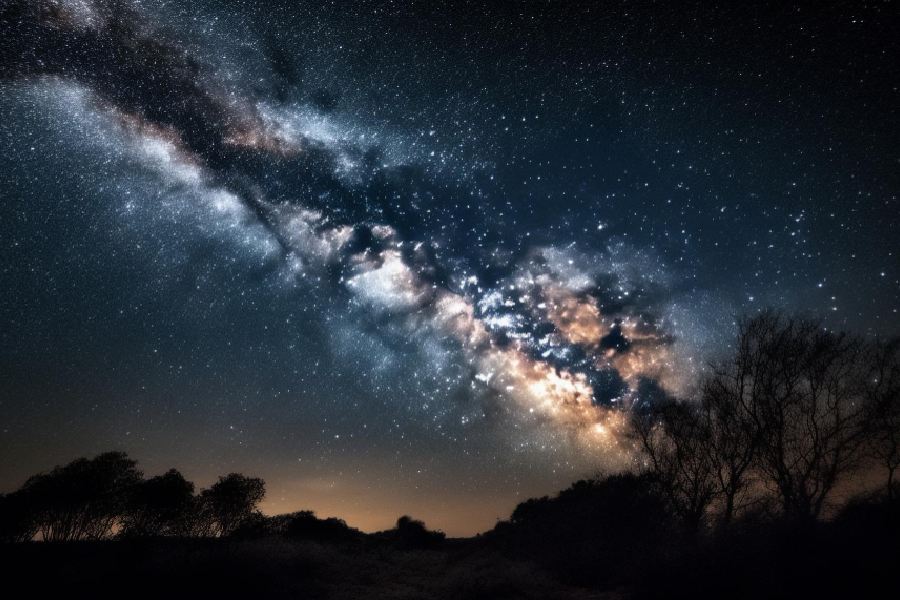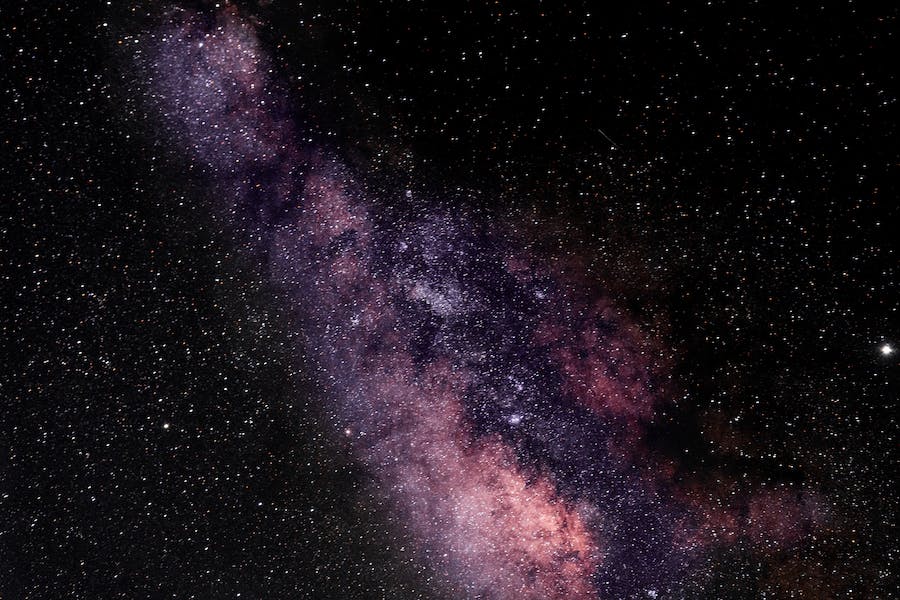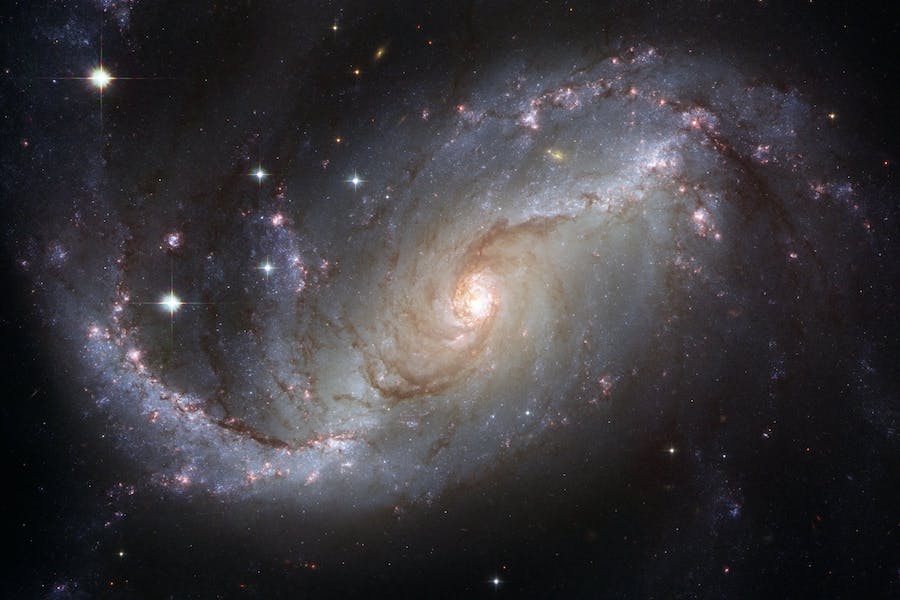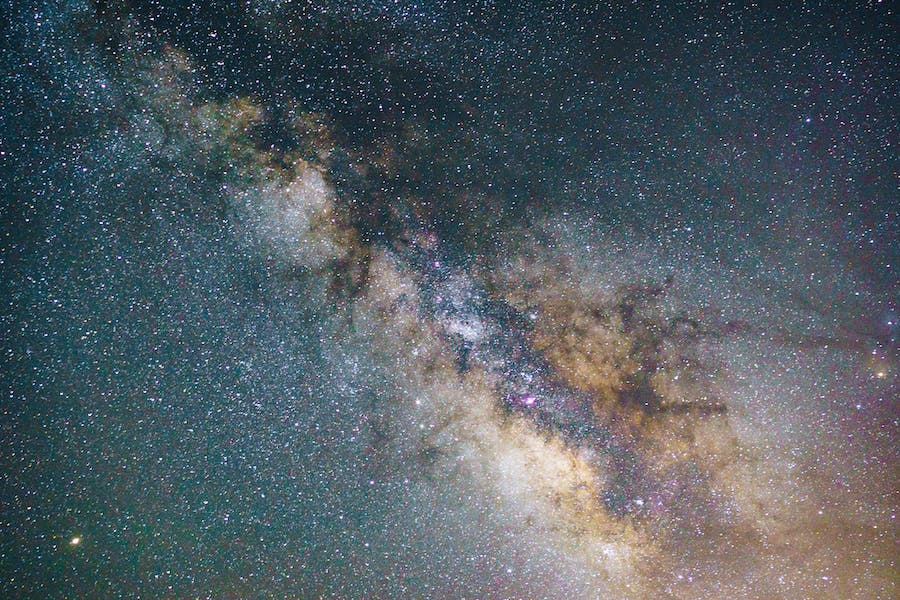Looking at the night sky, do you see a hazy band of light? That is our home galaxy, the Milky Way Galaxy.
The Milky Way is a collection of dust, stars, and gas. Did you know that our star– the Sun, is just one of the billions of stars swirling around the Milky Way Galaxy? Stay with us as we’ll take you on a tour across the Milky Way, uncover some of its most fascinating facts, and tackle among the most intriguing facts – how stars are born, how they live, and die within the Milky Way.
So, ready your spaceship for an adventure across 100,000 light-years and beyond. A journey through our Milky Way Galaxy awaits. The sights and revelations in store will forever change your perspective and understanding of the Cosmos that surrounds us.
What is the Milky Way Galaxy?
The Milky Way Galaxy is our celestial home, an immense spiral system containing billions of stars, including our Sun. It’s a vast, swirling collection of stellar wonders with intricate spiral arms and a central bulge.
Earth resides in one of these arms, offering us a unique perspective of our galactic surroundings. This captivating galaxy holds the key to understanding our cosmic address and the mesmerizing dance of stars in the night sky.
Its sheer size is mind-boggling, spanning about 100,000 light-years in diameter. As we navigate through its celestial expanse, the Milky Way unfolds a mesmerizing tapestry of cosmic wonders. Let’s dive into this stellar playground and unravel the secrets of our galactic home!

Galactic Components in Milky Way Galaxy
Stars
Most stars, including our Sun, are main-sequence stars that fuse hydrogen into helium. They encompass a wide range of masses, temperatures, and luminosities but share a stable balance between gravity and outward pressure.
Continuing, the most massive stars evolve into red giants or red supergiants, expanding outward as they age. Supergiants like Betelgeuse are even more enormous in size.
Nearing the end of their lifespans, low and medium-mass stars shed their outer layers and contract into white dwarfs. Supported by electron degeneracy pressure, these dim, dense remnants contain the mass of our Sun squeezed into the size of Earth.
Some stars, also known as variable stars, vary intrinsically in brightness due to pulsations, eruptions, or cataclysmic explosions. Types include Cepheid variables used to gauge cosmic distances and supernovae marking the explosive end of massive stars.
Our Sun’s role in the Galaxy
The Sun formed around 4.6 billion years ago from a collapsing cloud of gas and dust. The Sun resides around 27,000 lightyears from the Milky Way’s center in the Orion Arm, a minor spiral arm between two major arms. It orbits once around the galactic center, approximately every 250 million years. The Sun’s gravity dominates the motion of objects within the Solar System, keeping planets and other bodies in regular elliptical orbits around it. Its energy also drives key processes on planets.
However, as the Sun exhausts its nuclear fuel, it will swell into a red giant in several billion years and eventually settle into a white dwarf.
Planets and celestial bodies
Exoplanets within the Milky Way
Exoplanets are planets that orbit stars other than our Sun, with thousands being discovered in the past few decades.
These are discovered mainly through indirect methods like detecting planetary transits and gravitational wobbles in stars. This indicates planets are common throughout our galaxy. Exoplanets’ size ranges from small rocky planets like the Earth to large gas giants several times the size of Jupiter.
A major motivation behind exoplanet studies is identifying potentially habitable worlds. Finding exoplanets in the habitable zones of stars, with conditions conducive to liquid surface water, will bring us closer to answering whether life exists beyond Earth.
Notable features like Nebulae and Star Clusters
Nebulae
Nebulae are vast clouds of gas and dust occupying the space between stars. They glow due to the radiation from hot, young stars buried within them. Nebulae provide the materials for new generations of stars forming within them.
Inside nebulae, the giant molecular clouds provide fertile breeding grounds for new stars to form. These stellar nurseries will collapse under gravity and fragment, birthing protostars that grow into full-fledged stars, often with planetary systems.
Star clusters
Star clusters contain groupings of stars, ranging from a few dozen to millions, bound together by gravity. Globular clusters contain some of the oldest stars in our galaxy. Open clusters form from collapsing molecular clouds.

Galactic Evolution of the Milky Way
Formation and age of the Milky Way
Our galaxy began forming roughly 13.6 billion years ago in the early Universe as the first stars and galaxies were emerging. The Milky Way formed from the collision and fusion of smaller protogalaxies made of primordial gases. Over billions of years, gravity pulled more material together into the galactic center.
Now, scientists estimate the age of the Milky Way’s oldest stars to be approximately 13.6 billion years old, dating back to the earliest epochs of galaxy formation after the Big Bang. Age measurement techniques include looking at the oldest star clusters and modeling stellar evolution.
Changes and Developments Over Time
In its youth, the Milky Way was likely smaller and more compact. As more gas and stars accumulated, distinct components like the spiral arms, central bar, and bulge developed. The proportions of dark matter, gas, and stars also shifted as the galaxy matured over aeons.
The Milky Way continually sees new stars being born in nebulae from collapsing clouds of gas, while older stars eventually perish in events like supernovae, dispersing material for the next generation.
The changing ratios of star types reflect this stellar cycle of birth and death on galactic scales.
Interactions with other galaxies
Collisions with smaller galaxies like the Sagittarius Dwarf Spheroidal Galaxy added more mass and stars to the Milky Way over time. In the distant future, it will merge with the neighboring Andromeda galaxy, dramatically altering its structure again.
Earth’s Place in the Milky Way
Our Solar System’s Location
Our Solar System resides in the Orion Arm, a minor spiral arm located between the Sagittarius arm and the Perseus arm, approximately 27,000 lightyears from the galactic center.
The Sun, with Earth and other planets in tow, orbits around the galactic center at a velocity of about 515,000 mph. It takes approximately 225-250 million years to complete one galactic year.
The Solar System oscillates up and down through the galactic plane as it revolves around the Milky Way. Earth itself travels at about 67,000 mph in its orbit around the Sun, which in turn is moving through the Galaxy. The combined motion produces the Sun’s helical path through the Milky Way.
From the perspective of Mars, our neighboring planet, the Milky Way unveils itself as a captivating celestial tapestry. With Mars’ thin atmosphere and minimal light pollution, the galactic band graces the Martian night sky, providing future explorers with a mesmerizing view of our home galaxy.
Milky Way seen from the surface of Mars pic.twitter.com/QQbBoP9Nas
— DogeDesigner (@cb_doge) October 17, 2023
Impact of the Milky Way on Earth’s Environment
Galactic influences
The Milky Way’s spiral arms and interstellar clouds influence the motion of our Solar System over time. Gravitational interactions with other stars, gas clouds, and the overall mass of the galaxy all play a role in perturbing the orbits of objects within our Solar System.
Cosmic radiation
High-energy cosmic rays originating from supernovae, pulsars, and other energetic astronomical events within our galaxy interact with Earth’s atmosphere. This can influence cloud formation and climate. The rate of cosmic ray bombardment on Earth fluctuates in response to our changing position within the Milky Way.
Galactic events
Powerful explosions like supernovae and gamma-ray bursts occur when massive stars perish. If a supernova occurred sufficiently close to our Solar System, it could potentially impact life on Earth through radiation exposure. Fortunately, the last nearby supernova explosion occurred millions of years ago.
Understanding Earth’s galactic environment provides insights into both past and future influences. From climate effects to mass extinction events, the link between our planet and its host galaxy remains an active area of study in astrophysics and climatology.

Conclusion
We conclude our journey across the magnificent Milky Way Galaxy. From the fiery nuclear core to the outer fringes of the galactic halo, we have encountered sights both strange and wondrous. Along the way, we saw how stars are born in glowing nebulae, tracked rogue black holes wandering the galaxy, and imagined life flourishing on distant exoplanets.
The Milky Way Galaxy has revealed itself to be more complex, dynamic, and mysterious than we could have imagined. We hope you have gained a new appreciation for the place we call home in this vast universe.
When you look up at the Milky Way hanging in the night sky, remember you are staring deep into the heart of our cosmic metropolis filled with 100 billion stars and endless possibilities. We inhabit a fascinating galaxy just waiting to be explored.

